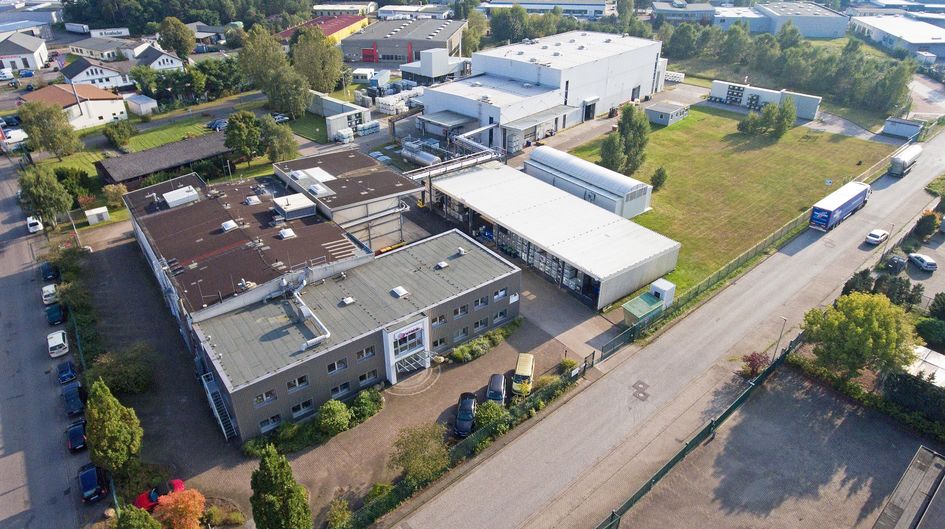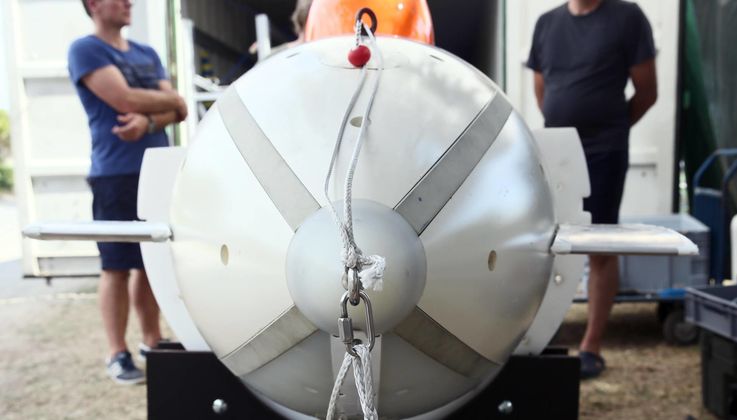The port of Hamburg
Evonik participates in project RAMSSES
Shipbuilding: not a heavy job
By participating in the EU shipbuilding project RAMSSES, Evonik wants to make the construction of ship hulls up to 80 meters in length faster, more efficient and more sustainable.

Thirteen different projects are expected to develop shipbuilding of the future. Evonik is involved in the development of a new high-sea hull.
After many difficult years, the European shipbuilding industry has achieved a turnaround. While, on a global scale, the industry is still suffering from the effects of the financial crisis, European shipbuilding is almost back at the level it was in 2008, with German shipyards being especially successful. In 2018, open orders were almost a third higher than in 2008*. The reason: Instead of getting involved in a ruinous price war for orders with Asian competitors, the shipyards chose to specialize in medium-sized ships with modern and sophisticated technology and in cruise ships. To maintain this technological lead, 36 partners joined forces to take part in the EU project RAMSSES. For this project, companies in the shipbuilding industry were joined by suppliers of innovative materials. The aim is to make ships considerably lighter, which would give them a quantum leap in terms of efficiency. Evonik is taking part in the EU project and, together with partners, is developing a glass-fiber reinforced plastic hull.
The Center of Maritime Technologies (CMT) in Hamburg-Barmbek has the responsibility for coordinating the 36 partners from twelve EU countries in the RAMSSES project. The center is based at the Hamburg Ship Model Basin HSVA and is already involved in the “MariLight” initiative funded by the German Federal Ministry for Education and Research, which is working on lightweight construction methods in shipbuilding and which Evonik is also participating in.
High performance resin

The Hamburg Shipbuilding Research Institute (HSVA) is considered the world's leading technology driver and developer.
One of the goals of the RAMSSES project is to develop an 80-meter-long ship by 2021 that is considerably lighter than comparable steel ships. Since specific solutions for the shipyard industry are wanted, the stakes are high. The hull must not only fulfill or even exceed the demands that are placed on a steel hull, it must also be possible to build it under shipyard conditions. Specifically, this means working at potential outdoor temperatures of between minus ten and plus thirty degrees Celsius. For the resin being used, this means that it must flow quickly and without bubbles even during frosty conditions and that it must not harden too quickly in hot weather.
At Evonik in Geesthacht, which is less than 30 kilometers from the CMT, Stephan Sprenger is certain that the material from Evonik can meet these demands. Sprenger, who is responsible for the RAMSSES project at Evonik, says, “At the composites competence center in Geesthacht we have developed a new high-performance resin especially for this application. It was important to fulfill the requirements for mechanics, impact resistance, fatigue behavior, and saltwater resistance for a large hull structure – always in comparison to steel as a reference material.” The resin developed by Evonik is hydrophobic, in other words, it repels water. Hull materials, such as those used in yacht construction, do not have this property and are therefore taken out of the water in winter to dry out, which is not really an option for an 80-meter-long ship that is used commercially.
Specialists from Geesthacht

The plant in Geesthacht has been specializing in the development of heavy-duty epoxy resins for some time.
Evonik already has a lot of experience in developing composite materials for the automotive, wind turbine, and aviation industries. When it comes to lightweight construction, shipbuilding has long been lagging behind, with serious consequences for the environment. These days, ships make a disproportionately high contribution to the emission of greenhouse gases. Lightweight construction could make a difference. The hull of a ship built using conventional steel engineering weighs about 300 metric tons. The same hull made from composites weighs just 60 metric tons. To put this in perspective: With the reduced weight of the hull alone, the ship could either carry 240 metric tons more load or use less energy to sail. But the hull is not the only area that RAMSSES is looking at.
Shipyards for cruise liners are planning to build the two upper decks from composites. That not only reduces weight, but also shifts the center of gravity downward. This would reduce the “rolling motion” of the ship that is so unpopular with many passengers. Plastic is already used to construct bridges on ships and for panels on the driving areas of auto ferries. Although hulls for container ships will likely still be built from steel for the foreseeable future, the containers themselves could be made from composites.
No matter whether hull, superstructure, or container: One other enormous benefit of composite materials at sea is that rust no longer plays a role. The long downtimes that ships have to spend in dry docks having the hull painted would no longer be necessary. And plastic hulls can also be recycled. Shredded and used in glass production, they provide raw materials and supply fuel. This procedure is already common in the recycling of wind turbines.
But in the composites competence center in Geesthacht, scientists are already thinking further into the future. “At present, we still use petrochemical products as base materials but, in the future, we will be able to produce plant-based resins,” says Stephan Sprenger. Industry is already considering replacing glass fibers with plant fibers, which weigh just half as much.
*Measured against the weighted gross tonnage, source: German Shipbuilding and Ocean Industries Association (VSM)


